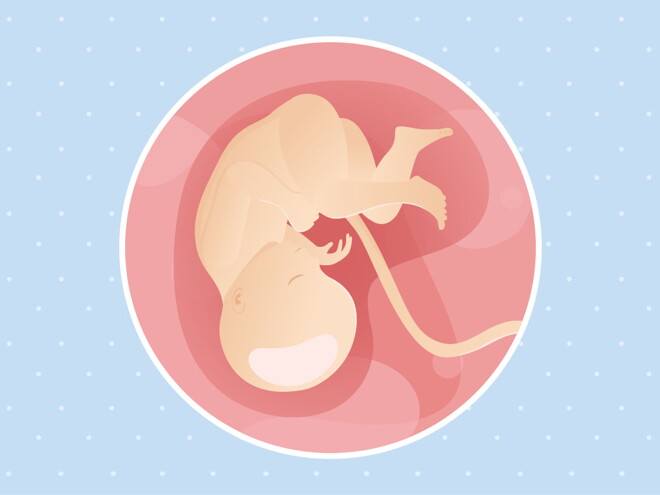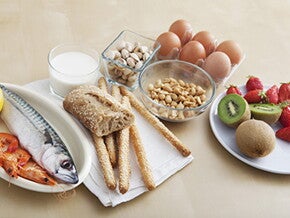
35 weeks pregnant: baby development and diet tips
In about a month, you’ll be holding that little bundle of joy in your arms. Until then, there’s still lots of polishing and refinement going on inside you. Read more about this week.
BABY DEVELOPMENT
At 35 weeks pregnant, the lungs of your baby are getting ready, and not only for that first post-birth cry! The substance that lines the inner surface of the ends of her bronchial alveoli is increasing to ensure their flexibility and prevent them from collapsing. Exchanges between you and the placenta continue. That’s what helps maintain the volume of amniotic fluid, contained in what is called the amniotic sac. When your little one’s appearance is imminent, it sometimes will break – your “water will break” – your sign to call your doctor!
YOUR BODY
From one day to the next, you may be breathing more freely and noticing that if you had indigestion, it seems to be improving. What’s going on? At 35 weeks pregnant, it’s simple: your baby is doing what it needs to do. Clever girl, she has moved head downwards into your pelvis, giving your lungs and stomach a bit more space. In the last few weeks of your pregnancy you may have the feeling that your body is beginning to prepare for your little love’s birth.
NUTRITION
Although foods from all the food groups (meat, or protein foods, fruit, vegetables, dairy, grains) provide you, and your baby, with needed nutrients and calories, there is another group of foods that deserves special attention: the fat group. Yes; there is need for some fat in the diet, especially Omega-3 fats. There’s a reason that some types of Omega-3s are called "essential fatty acids” because they are essential. Our bodies cannot synthesise them. You may have heard of ALA (alpha-linoleic acid) as an essential fat that is found in plant foods such as nuts and seeds. Another kinds of Omega-3 is DHA (docosahexaenoic acid), found primarily in fish. They participate in the structure of cell membranes and, in particular, the brain. Involved in regulating the information flow between cells, especially neurons, they are imperative for normal immune function. Collectively, you will find these magical Omega-3 fatty acids in flaxseed and canola oils, walnuts and walnut oil, wheat germ, and fatty fishes such as salmon. At 35 weeks pregnant, as you eat these foods, the healthy fatty acids are passed to your baby providing benefits to you both.
TIPS
As their pregnancy winds down, some women wonder if they’ll even be able to breastfeed. Know that nursing a baby is the most natural thing in the world. Your little darling already knows exactly what to do, having already practiced sucking while in the womb. And if you ever have difficulty getting it off the ground, there’s loads of help around. Plus, mother’s milk is the best thing you can give your child, a real miracle of nature. What‘s more, your milk automatically adjusts to your baby’s needs. At the start of the meal, the milk is thin and watery so as to quench baby’s thirst. Then it gets thicker and richer to satisfy your baby’s appetite. If your child develops a bigger appetite, your body will quickly adjust and produce more milk. Amazing!


















